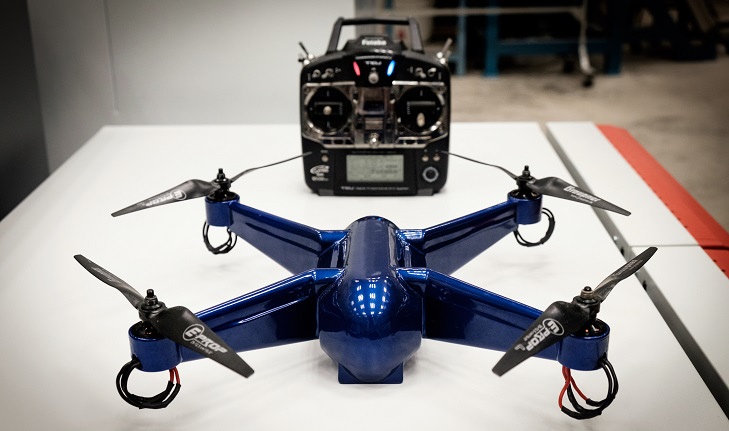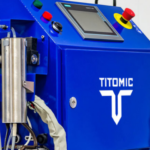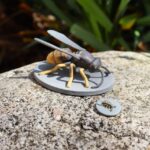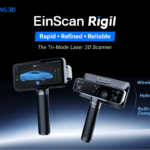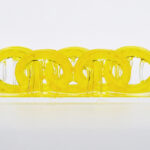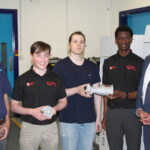All throughout the world of modern manufacturing, 3D printing is adding unique functionalities to various products in ways traditional manufacturing cannot manage. The ability to produce complex geometries better enables engineers to embed sensors, chips, tags and other electronics into objects as it’s possible to model internal cavities and housing into 3D printed parts. Here are just some of the ways that additive manufacturing is leading towards smarter objects.
Pre-Assembled 3D Printed Drones
NTU’s Singapore Centre for 3D Printing (SC3DP) and Stratasys jointly developed a 3D printed drone with embedded electronics back in 2016. One of the hurdles of embedding electronics in a 3D printed part is getting the electronics to survive the printing process, which is typically very hot. Because this drone was printed in ULTEM, a high-temperature material, the heat problem was exacerbated. The creator of the drone, Mr Phillip Keane, an NTU PhD candidate, explains:
“One of the toughest challenges was to find electronic components that could theoretically survive the high temperature printing process – we had to add some heat-proofing modifications to the components to ensure they could last. This involved adding new components to the printed circuit boards and also designing custom housings. The housings, which were pre-printed in ULTEM 9085, also provide a flat surface for the 3D printer to continue printing over them.”
The entire printing process took only 14 hours and required only three pauses to place the electronics into the print. Only the motors and propellers were added after it was printed. Being made out of ULTEM makes it incredibly light and durable, capable of suspending 60kg on its chassis.
Embedded Sensors For Remote Monitoring
Embedding sensors within 3D printed parts allows for one-way and two-way communication with devices and appliances. This method of creating smart devices has lots of potential for a variety of industries that require remote monitoring.
The ability to keep track of performance metrics and machine capabilities is particularly useful in industries with heavy engineering and maintenance responsibilities. This is why the concept of ‘smarter engineering through 3D printing’ has caught on at US Naval Labs, where engineers have been working on sensors that can detect changes in performance or even alert engineers to necessary repairs.
Similarly, Fabrisonic has been working with Luna Innovations, a fiber optics manufacturer, to develop smart sensors within pipes for NASA. These sensors could provide a great basis for monitoring pressure, temperature, and heat flux in the fuel systems of rockets. Generally, sensors are attached to the outside of pipes but that limits their accuracy; embedding the sensors in the walls of the pipes greatly improves their accuracy. The Fabrisonic Ultrasonic Additive Manufacturing (UAM) system was used to embed the sensors within metal pipes.
Making 3D Printed Medical Devices Smarter
The medical industry has also been a major proponent of 3D printed smart devices, creating responsive technologies for real-time monitoring of physiological events, advanced diagnostics, and connected feedback. One example comes from researchers at Curtin University in Western Australia, who developed 3D printed casts and braces that improve patient care with sensor feedback. The low-cost rehabilitation braces have inertial measurement sensors embedded inside that read and interpret acceleration and angular velocity.
One of our main focuses at the moment is on the treatment, and here we can watch how people are doing their physiotherapy exercises, see how long they are doing them for. And because we have modeled the movement, we can see if they are doing the exercise correctly. Professor Murray, Curtin University
3D Printed Sensors
Beyond just embedding traditionally-manufactured sensors into 3D printed parts, researchers are also using conductive inks to directly 3D print sensors into objects. A team out of Wyss Institute and Harvard SEAS printed circuits into the fingers of a soft-robotics actuated hand to enable it to “feel” pressure, temperature, and motion. While this would be a great upgrade to many robotic systems, it would also dramatically improve prosthetic devices.
The Internet of Things grows larger everyday and 3D printing is a big part of that connected ecosystem. The combination of complex geometries and multi-material fabrication make 3D printing the ideal manufacturing method for embedded electronics and sensors so expect to see more use cases like these.


